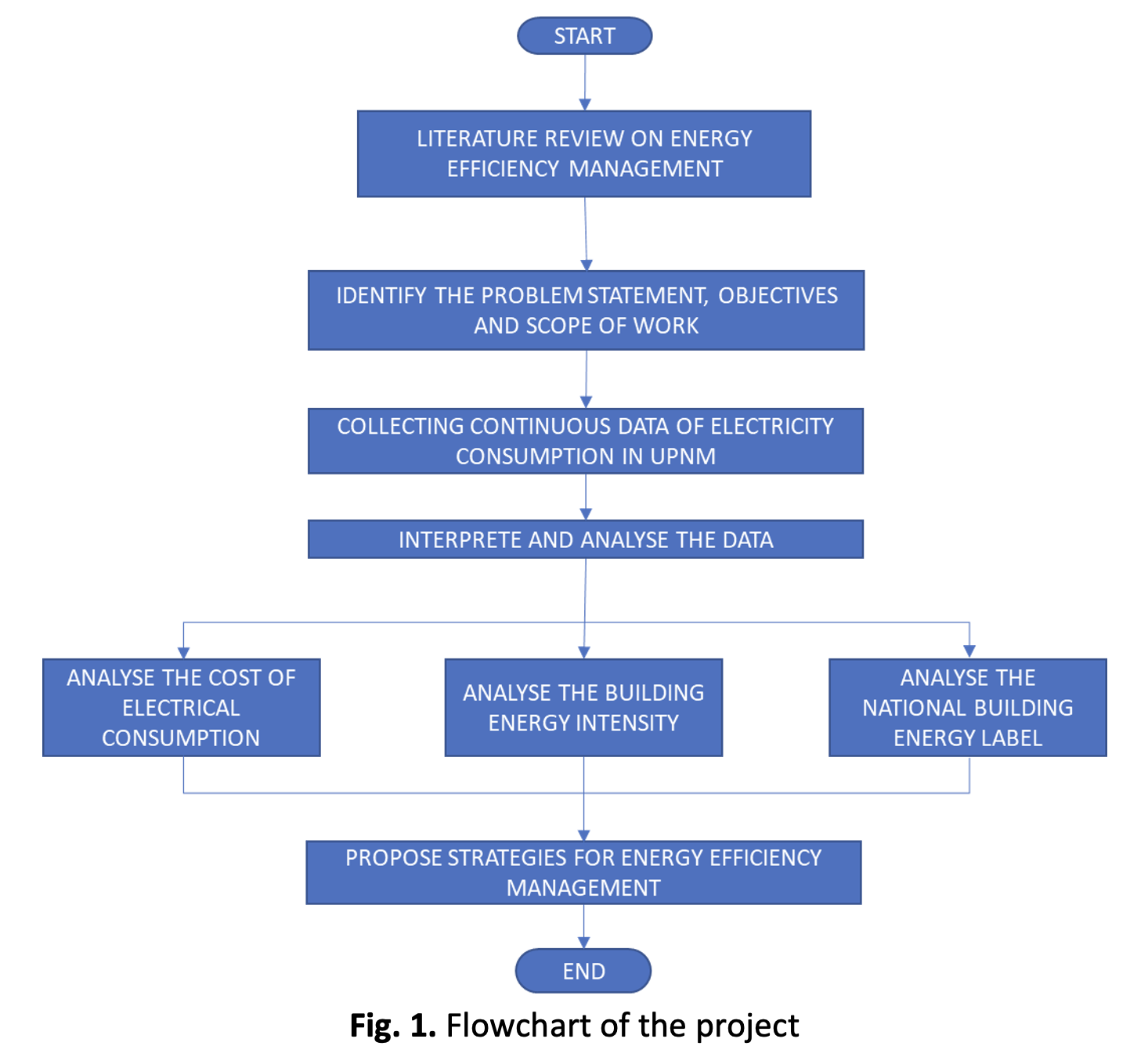A Case Study on Energy Efficiency of Lestari Building at UPNM
DOI:
https://doi.org/10.37934/araset.35.2.1121Keywords:
Energy efficiency, building energy intensity, national building energy labelAbstract
With the advancement of Industrial Revolution 4.0, the trend of global energy consumption seen to be rising and one of the largest energy utilisers is from the commercial building sector. In respecting to the Paris Agreement 2015 to reduce the greenhouse gases, various efforts and measures have been taken by the Malaysian authorities in ensuring the usage of energy in efficient ways especially in government owned buildings and one of the measurements is by introducing the Energy Efficient Building’s Star Ratings. Therefore, this paper intends to explore and present a case study of a two-year energy consumption and its pattern at Lestari Building, Universiti Pertahanan Nasional Malaysia (UPNM). For this study, data such as gross floor area of Lestari Building, total electricity consumption, maximum demand for the Lestari building were obtained from January 2019 up to December 2020 using the desktop audit method. The obtained results have been analysed and presented in terms of cost of electrical consumption, building energy intensity (BEI) and energy label for the Lestari building according to the National Building Energy Labelling Standard. Based on the study conducted, Lestari Building obtained a 3-Star rating for the year 2020 in comparison to the year 2019 with just a 2-Star rating. In conclusion, several strategies for further improvement of the energy efficiency and building performance were also suggested in this paper such as the introduction of PIR sensors in the parking lot of Lestari building.





























